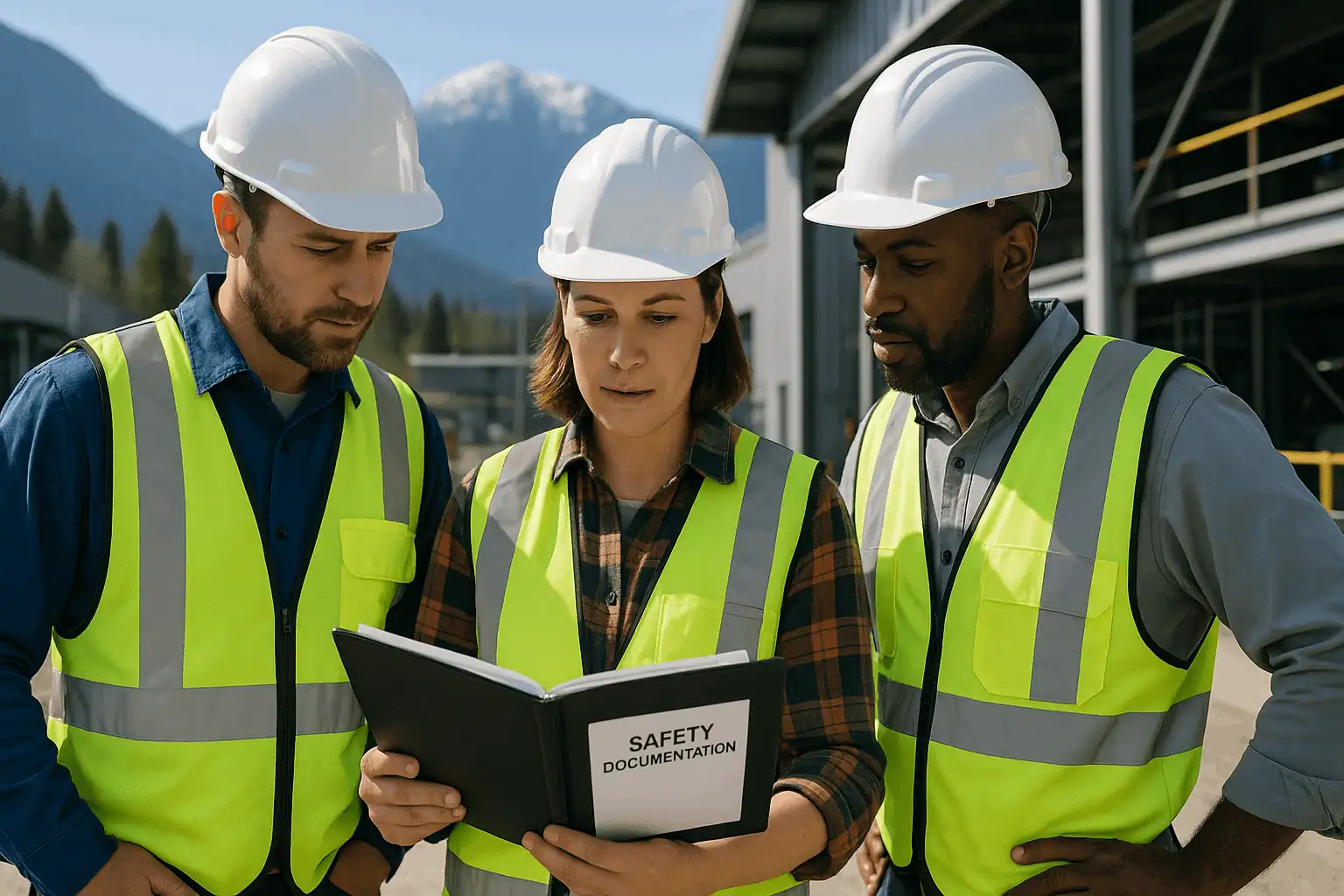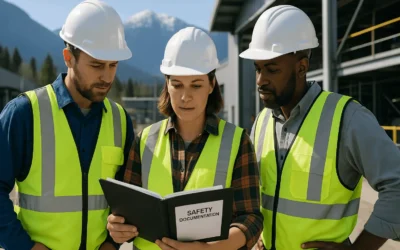If you’re a small business owner in British Columbia wondering what COR certification is and whether your company needs it, you’re not alone. The Certificate of Recognition (COR®) might sound like just another piece of bureaucratic paperwork, but it’s actually become a critical business credential that can unlock new contracts, reduce your WorkSafeBC premiums, and most importantly, keep your workers safer.
This complete guide breaks down everything you need to know about getting COR certified in BC—from understanding the different program tiers to choosing the right certifying partner for your industry. We’ll walk you through the entire process in plain language, so you can make informed decisions about your safety program.
This guide specifically addresses how to get cor certified, ensuring you have all the necessary information to navigate the certification process effectively.
What is COR Certification and Why Your BC Business Needs It
The Certificate of Recognition (COR®) is a voluntary safety program that verifies your business has implemented a comprehensive occupational health and safety management system. Think of it as a stamp of approval that shows you’re serious about protecting your workers and running a professional operation.
In British Columbia, COR certification is administered through WorkSafeBC’s Partners Program, which contracts with industry-specific organizations called Certifying Partners to deliver the program. Unlike some provinces where you can choose from multiple partners, BC assigns you to a specific Certifying Partner based on your industry classification.
Why COR matters for your business:
Contract Access: Many major clients—from municipalities to large general contractors—now require COR certification to even bid on their projects. Without it, you’re locked out of lucrative opportunities before you can even submit a proposal.
Financial Incentives: WorkSafeBC offers annual incentives of up to 10% of your base premiums for certified employers. For many businesses, this rebate alone covers the cost of certification and then some.
Competitive Advantage: COR certification immediately signals that you’re a professional, safety-conscious operation. It differentiates you from competitors who haven’t made this investment.
Reduced Incidents: Independent studies consistently show that COR-certified companies experience fewer workplace injuries than non-certified firms. Fewer incidents mean lower costs, better productivity, and most importantly, your people go home safe.
Understanding BC’s Two-Tier System: Small vs. Large Employer COR
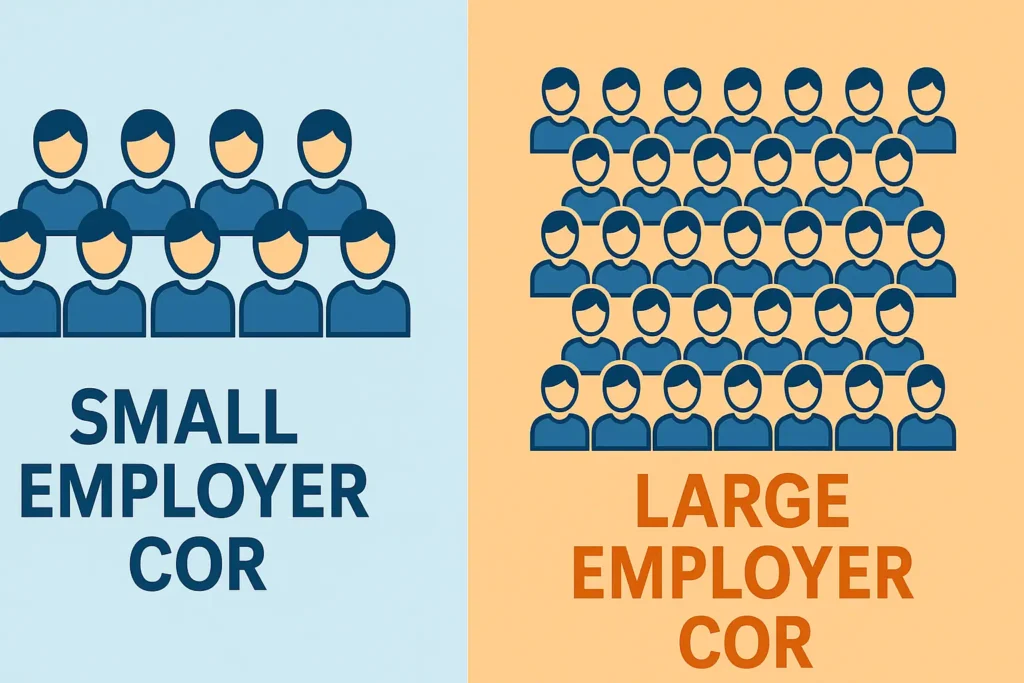
British Columbia offers two distinct certification paths based on your company size, with a crucial threshold that differs significantly from other provinces.
Small Employer COR (SECOR)
Who qualifies: Businesses with fewer than 20 employees
This is where BC stands out. While Alberta sets the small employer threshold at 10 employees, BC recognizes that companies with up to 19 workers can benefit from a more streamlined approach. If you have a 15-person crew, you qualify for the simpler SECOR process in BC, whereas you’d face the full external audit requirements in Alberta.
The SECOR process involves:
- Developing your occupational health and safety management system (OHSMS)
- Having a permanent employee complete internal auditor training
- Conducting a self-assessment audit
- Submitting your audit to your Certifying Partner for quality assurance review
Large Employer COR
Who needs it: Companies with 20 or more employees
The Large Employer COR follows a more rigorous process:
- OHSMS development and implementation
- Internal auditor training for a permanent employee
- External audit conducted by a qualified third-party auditor
- Quality assurance review by your Certifying Partner
The 80/50 Rule: Regardless of which tier you’re in, you must achieve a minimum overall audit score of 80% with at least 50% in each element to pass.
Your Industry, Your Certifying Partner: Who to Work With in BC
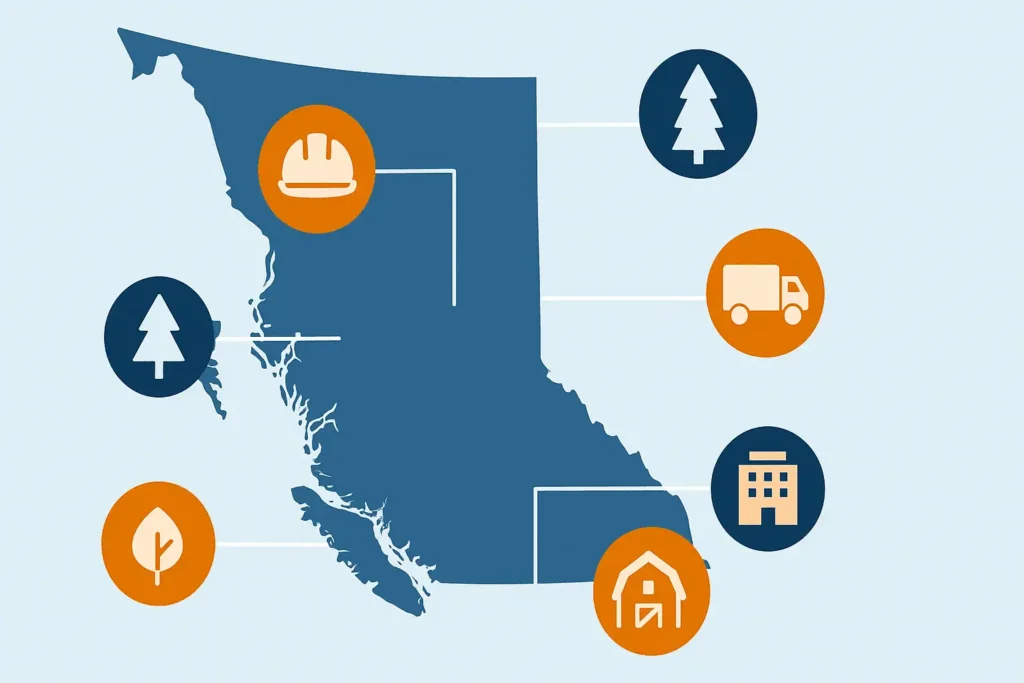
Unlike other provinces where you shop around for a Certifying Partner, WorkSafeBC assigns you to a specific organization based on your Classification Unit (CU) number. Here’s who serves which industries:
BC Construction Safety Alliance (BCCSA)
Industries: Construction, electrical, plumbing, HVAC, roofing, concrete. Website: https://www.bccsa.ca
If you’re in any construction trade, BCCSA is your partner. They understand the unique challenges of construction sites, seasonal work, and the safety requirements for everything from high-rise projects to residential renovations.
BC Forest Safety Council
Industries: Forestry, logging, sawmills, pulp and paper, wood manufacturing Website: https://www.bcforestsafe.org
BC’s forestry sector faces unique hazards, and the BC Forest Safety Council has specialized expertise in silviculture, harvesting operations, and wood processing facilities.
Manufacturing Safety Alliance of BC (MSABC)
Industries: Food processing, machinery manufacturing, metal fabrication, chemical production Website: https://www.mfgsafetybc.ca
Manufacturing operations have distinct safety requirements around machinery, chemical handling, and production processes that MSABC understands intimately.
SafetyDriven – Trucking Safety Council of BC
Industries: Trucking, transportation, logistics, warehousing Website: https://www.safetydriven.ca
If you move goods around BC—whether local delivery or long-haul transport—SafetyDriven specializes in the safety challenges of commercial driving and cargo handling.
go2HR
Industries: Tourism, hospitality, restaurants, hotels, recreation Website: https://www.go2hr.ca
BC’s tourism and hospitality sector has unique safety considerations around customer service environments, seasonal operations, and diverse workplace hazards that go2HR addresses.
AgSafe
Industries: Agriculture, farming, ranching, greenhouse operations Website: https://agsafebc.ca
Agriculture involves everything from heavy machinery to chemical handling to livestock management. AgSafe understands the specific safety needs of BC’s diverse agricultural operations.
Don’t see your industry listed? Contact WorkSafeBC directly at 604-244-6181 or through their website to confirm which Certifying Partner serves your specific business type.
The Step-by-Step COR Certification Process in British Columbia
Getting COR certified isn’t complicated, but it does require following a specific sequence. Here’s your roadmap:
Step 1: Register with Your Certifying Partner
Contact your assigned Certifying Partner to begin the registration process. They’ll provide you with program materials, audit tools, and training schedules specific to your industry.
Step 2: Complete Required Training
A permanent employee from your company must successfully complete COR Internal Auditor Training through your Certifying Partner. This person becomes your internal safety resource for maintaining the system.
Training typically covers:
- Understanding your industry’s specific audit tool
- How to conduct effective workplace inspections
- Incident investigation techniques
- Documentation requirements
- Ongoing maintenance responsibilities
Step 3: Develop Your OHSMS
This is where the real work begins. You’ll need to create policies, procedures, and systems that address all elements of your Certifying Partner’s audit tool. The good news? Your Certifying Partner provides templates and guidance specific to your industry.
Key system elements typically include:
- Health and safety policy and commitment
- Hazard identification and risk assessment
- Safe work procedures and training
- Incident reporting and investigation
- Emergency response planning
- Regular workplace inspections
- Management review and continuous improvement
Step 4: Implement and Document
Your system needs to be actually working—not just existing on paper. Implement your procedures, train your workers, and document everything. Most Certifying Partners recommend at least 12 months of implementation before attempting your audit.
Step 5: Conduct Your Audit
For Small Employer COR: Your trained internal auditor conducts a self-assessment using your Certifying Partner’s audit tool.
For Large Employer COR: You must hire a qualified external auditor approved by your Certifying Partner.
Step 6: Quality Assurance Review
Your completed audit gets submitted to your Certifying Partner for quality assurance. They review the audit for completeness and accuracy before recommending you to WorkSafeBC for certification.
Step 7: Receive Your Certificate
Upon successful review, WorkSafeBC issues your COR certificate, typically valid for three years.
Documentation Requirements: What You’ll Need to Prepare
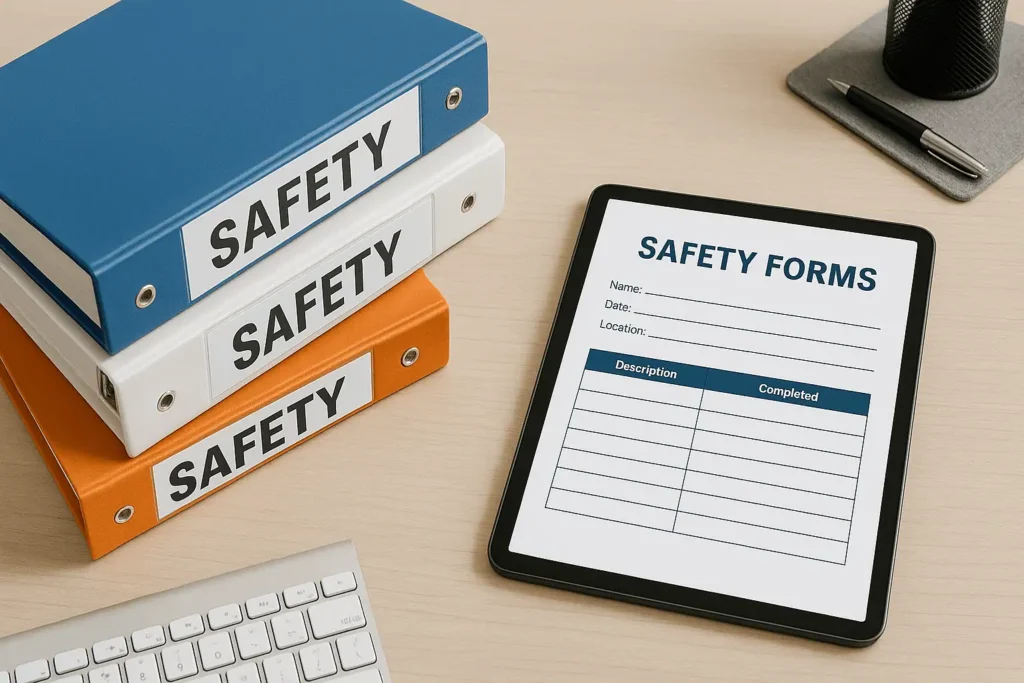
The audit process requires substantial documentation. While specific requirements vary by industry, here’s what most BC businesses need:
Policy Documentation
- Written health and safety policy signed by senior management
- Clearly defined roles and responsibilities
- Communication procedures for safety information
Training Records
- New worker orientation documentation
- Job-specific safety training records
- Competency assessments
- Training schedules and refresher requirements
Hazard Management
- Formal hazard assessments for all work activities
- Safe work procedures for high-risk tasks
- Personal protective equipment requirements
- Control measures for identified hazards
Inspection and Monitoring
- Workplace inspection schedules and checklists
- Equipment inspection records
- Corrective action tracking
- Management review meeting minutes
Incident Management
- Incident reporting procedures
- Investigation records with root cause analysis
- Corrective action implementation
- Return-to-work programs
Emergency Preparedness
- Emergency response plans for various scenarios
- Evacuation procedures
- Emergency equipment inspection records
- Emergency drill documentation
COR Audit Process: What to Expect and How to Pass
Understanding the audit process helps reduce anxiety and improve your chances of success.
Before the Audit
Preparation is key. Ensure all documentation is current, organized, and easily accessible. Your audit will likely involve:
- Document review
- Workplace inspection
- Employee interviews
- Management interviews
During the Audit
Auditors will assess whether your documented system is actually being implemented. They’re looking for evidence that:
- Workers know and follow safety procedures
- Management actively supports the safety program
- Corrective actions are taken when problems are identified
- The system is continuously improving
Scoring and Results
Your audit will be scored against each element of your industry’s audit tool. Remember the 80/50 rule: 80% overall with at least 50% in each element.
If you don’t pass: Don’t panic. You’ll receive a detailed report identifying gaps and can work with your Certifying Partner to address deficiencies before re-auditing.
Costs and Timeline: Planning Your COR Journey
Typical Costs
Training: $500-1,500 per person for internal auditor training External Audit (Large Employer COR only): $2,000-5,000 depending on company size and complexity Certifying Partner Fees: $500-2,000 annually for membership and program fees System Development: $3,000-15,000 if hiring consultants
Total Investment: Small employers might spend $2,000-5,000, while larger companies could invest $10,000-20,000 or more.
Timeline Expectations
System Development: 3-6 months Implementation Period: 6 – 12 months (recommended before audit) Audit Process: 1-3 days on-site Quality Assurance Review: 2-8 weeks Total Timeline: 6 – 12 months from start to certification
Maintaining Your COR Certification: Ongoing Requirements
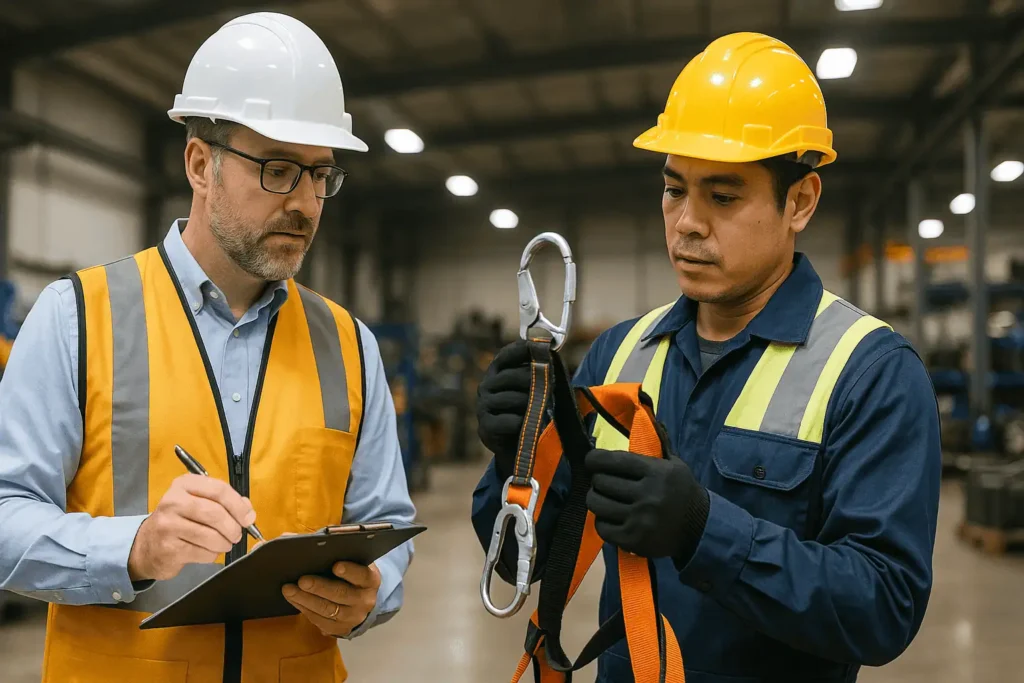
COR isn’t a one-and-done achievement. Maintaining certification requires:
Annual Maintenance Audits
Your trained internal auditor must conduct annual self-assessments to ensure your system remains effective.
Continuous Improvement
Document how you’re improving your safety program based on incident trends, near misses, and audit findings.
Recertification
Every three years, you’ll need a full recertification audit—either internal (Small Employer COR) or external (Large Employer COR).
Staying Current
Keep up with changes in WorkSafeBC regulations, industry best practices, and your Certifying Partner’s requirements.
Frequently Asked Questions About BC COR Certification
Q: How long does it take to get COR certified in BC? A: Most businesses take 18-30 months from starting system development to receiving their certificate. This includes 12-18 months of implementation to generate sufficient documentation for the audit.
Q: Can I get COR certified if I have recent WorkSafeBC violations? A: Yes, but your Certifying Partner will review your compliance history. Recent serious violations may delay your certification until you demonstrate sustained improvement.
Q: What’s the difference between COR and other safety certifications? A: COR is specifically recognized by WorkSafeBC and many BC clients. Other certifications like ISNetworld or Avetta may have different requirements and aren’t interchangeable with COR.
Q: Do I need COR if I’m already ISNetworld qualified? A: Possibly. Many clients require both COR certification and ISNetworld qualification. They serve different purposes—COR verifies your management system while ISNetworld is a contractor prequalification database.
Q: Can I lose my COR certification? A: Yes. Significant safety violations, failure to maintain your system, or not completing required maintenance audits can result in suspension or revocation of your certificate.
How Calibre Can Simplify Your COR Certification Process
Reading through this guide, you might feel overwhelmed by the scope of work required for COR certification. That’s completely normal—and exactly why Calibre Business Solutions exists.
We’ve guided BC companies through successful COR certification for over 15 years. We understand the specific requirements of each Certifying Partner and can tailor your safety management system to match how your crews actually work, not just what looks good on paper.
Our COR certification services include:
- Gap assessments to identify what you need to develop
- Custom policy and procedure development
- Worker training programs that stick
- Audit preparation and mock audits
- Ongoing support for maintenance requirements
More importantly, we handle the paperwork and compliance headaches so you can focus on running your business. Our clients consistently pass their audits on the first attempt because we ensure everything is audit-ready before the auditor arrives.
Let Calibre Business Solutions handle your safety, so you can concentrate on running your business. Contact us at 780-832-5158 or blake@calibrebusinesssolutions.ca to discuss how we can streamline your path to COR certification.
Ready to get started? Your first step is contacting your assigned Certifying Partner to begin the registration process. Use the links provided in this guide to reach the right organization for your industry, and take the first step toward certification today.

